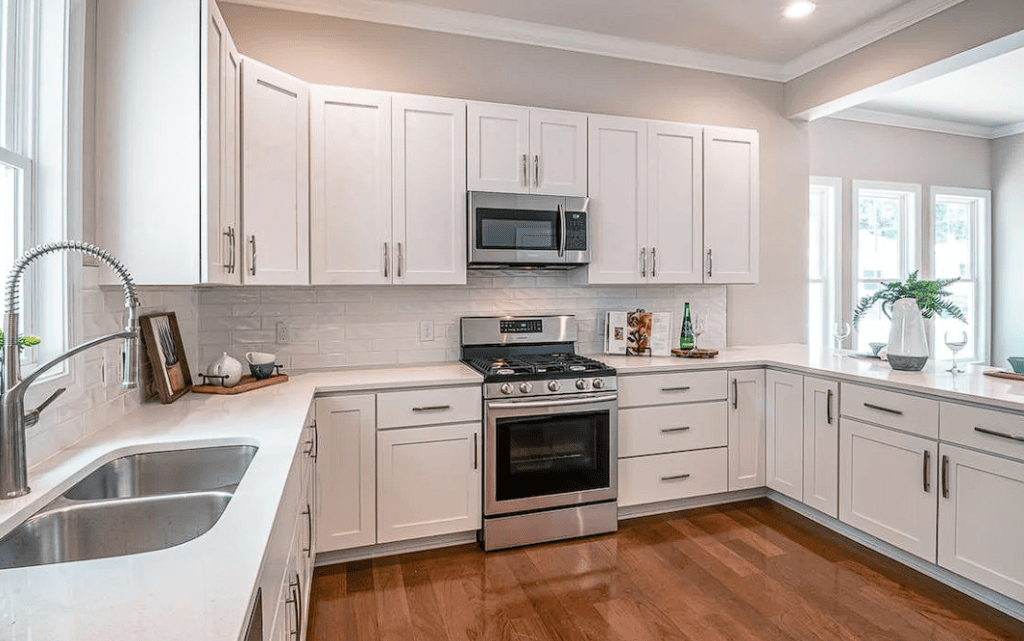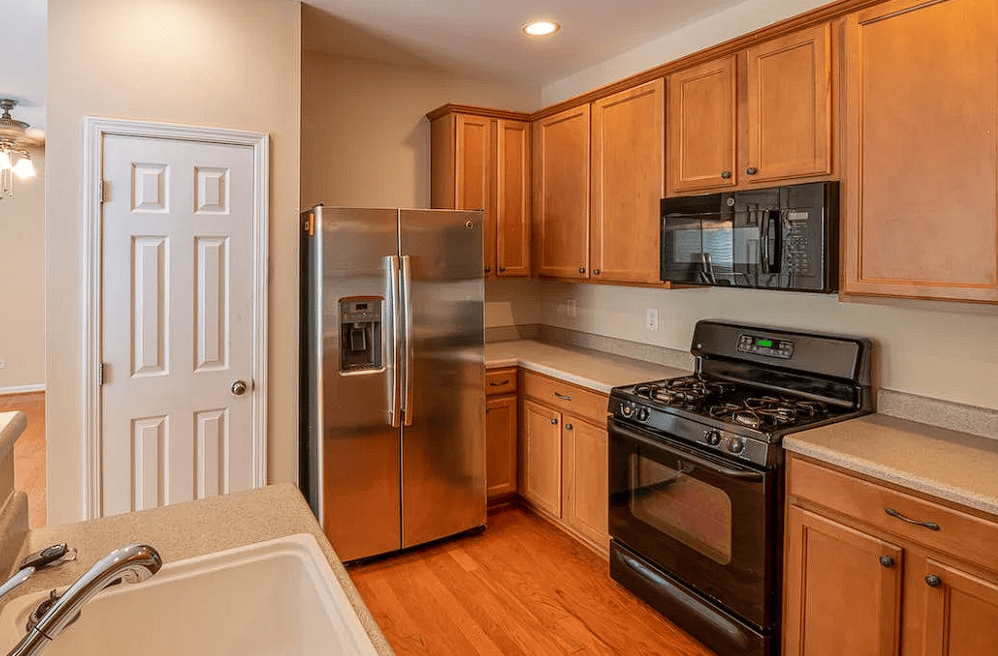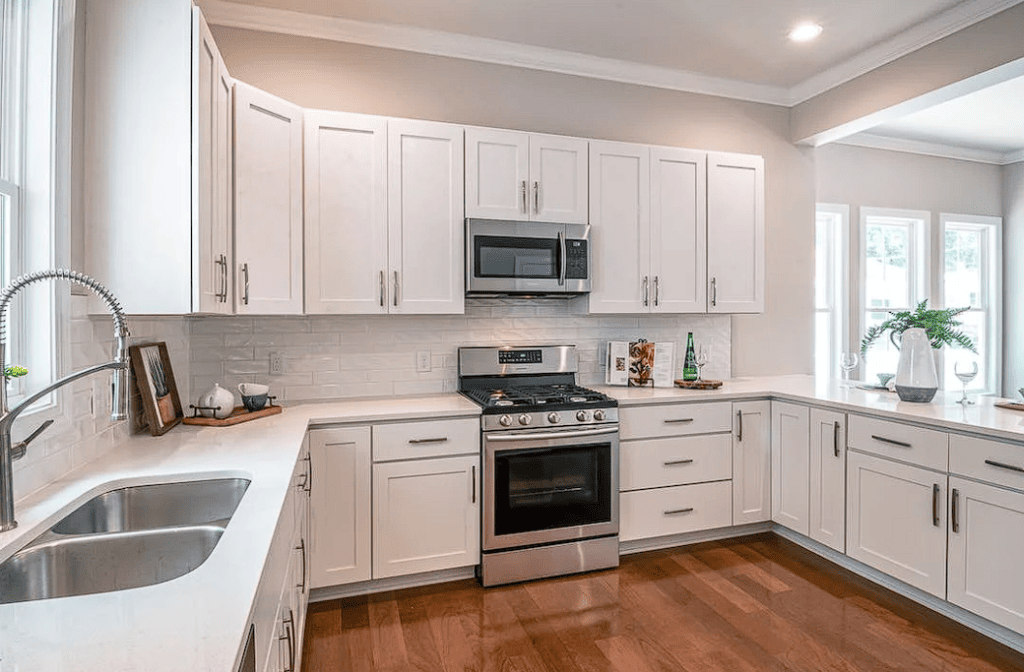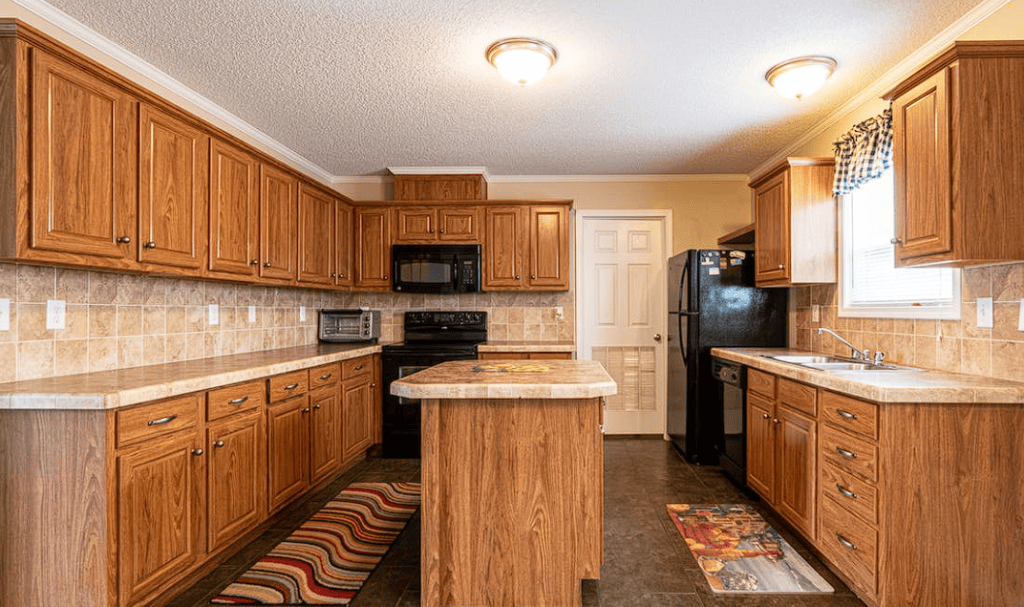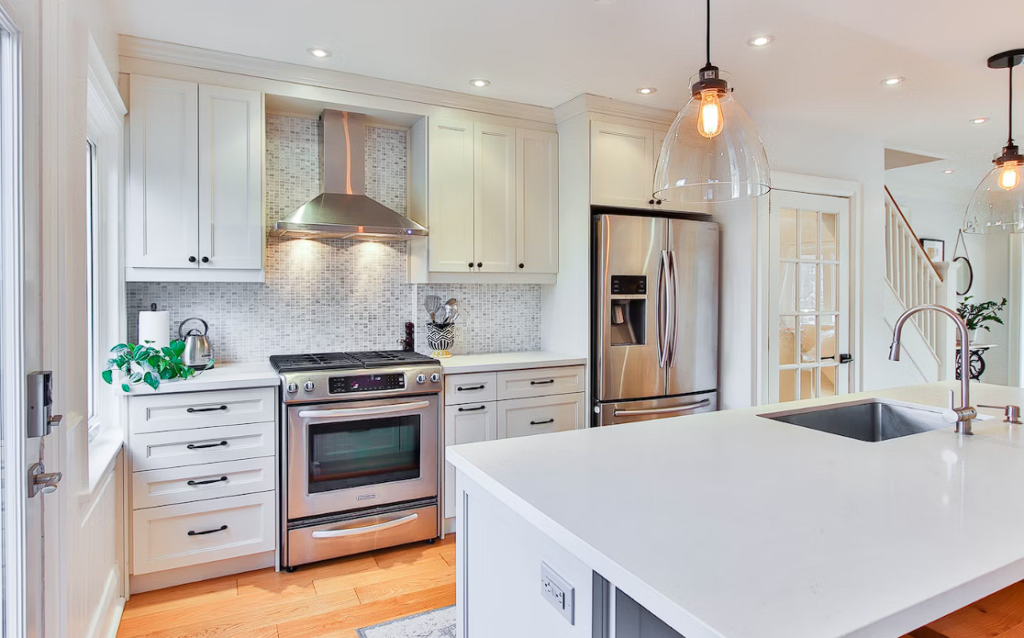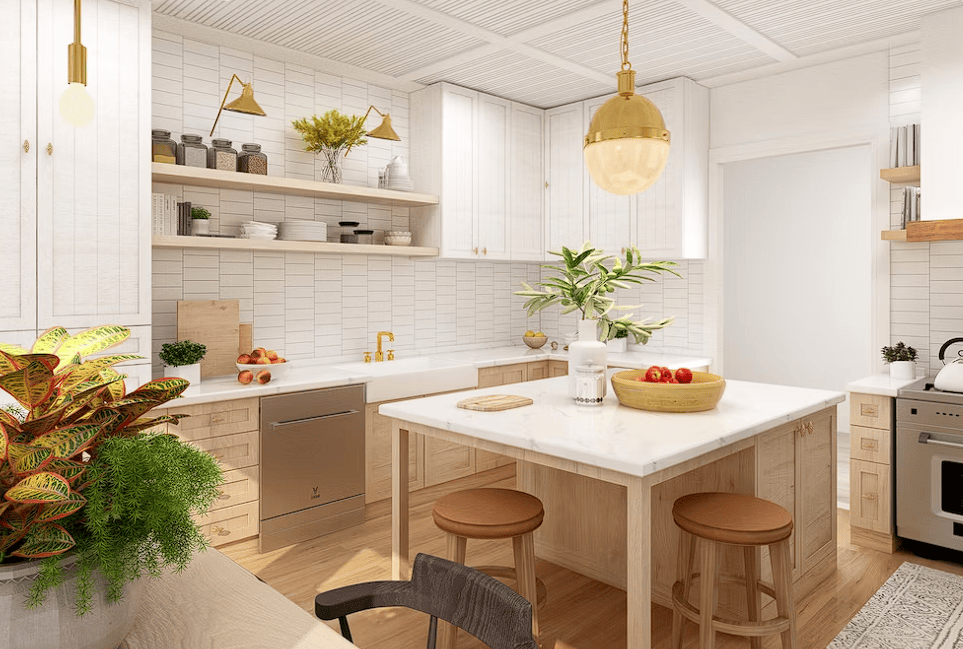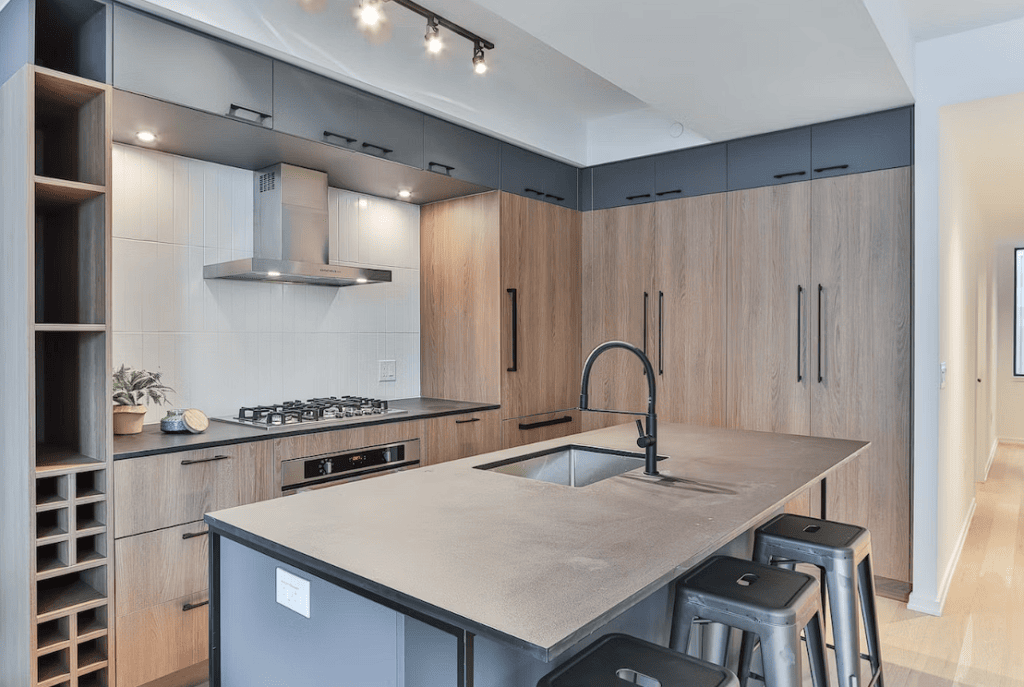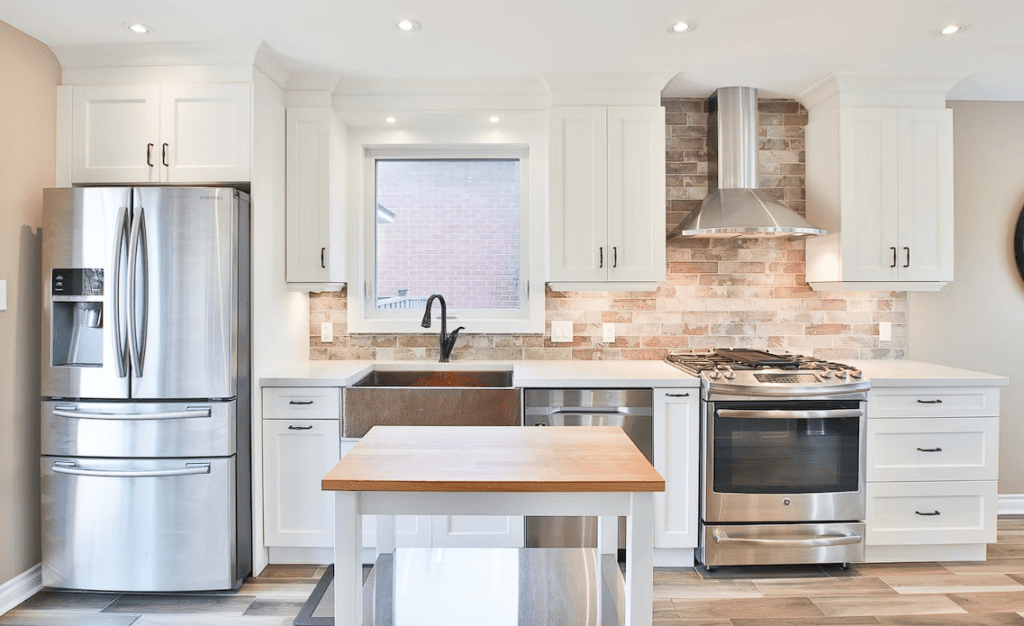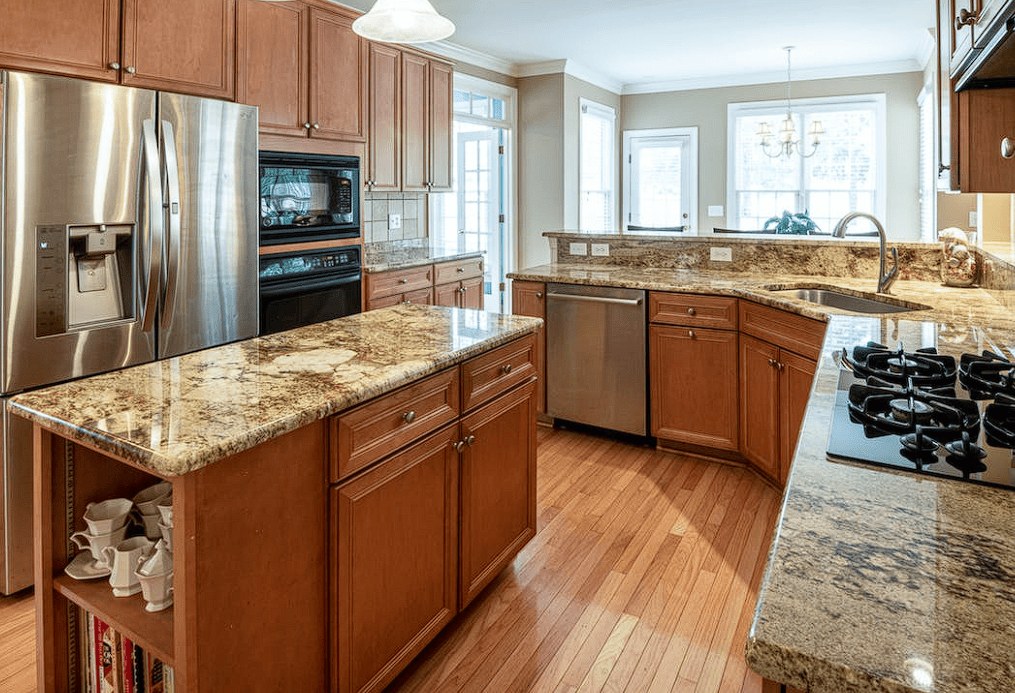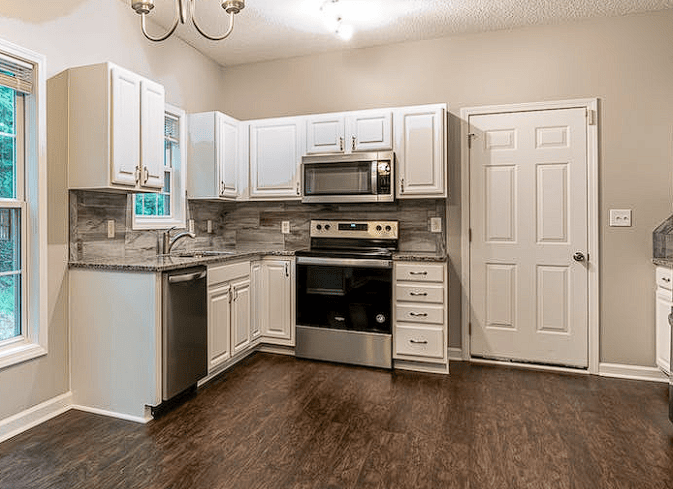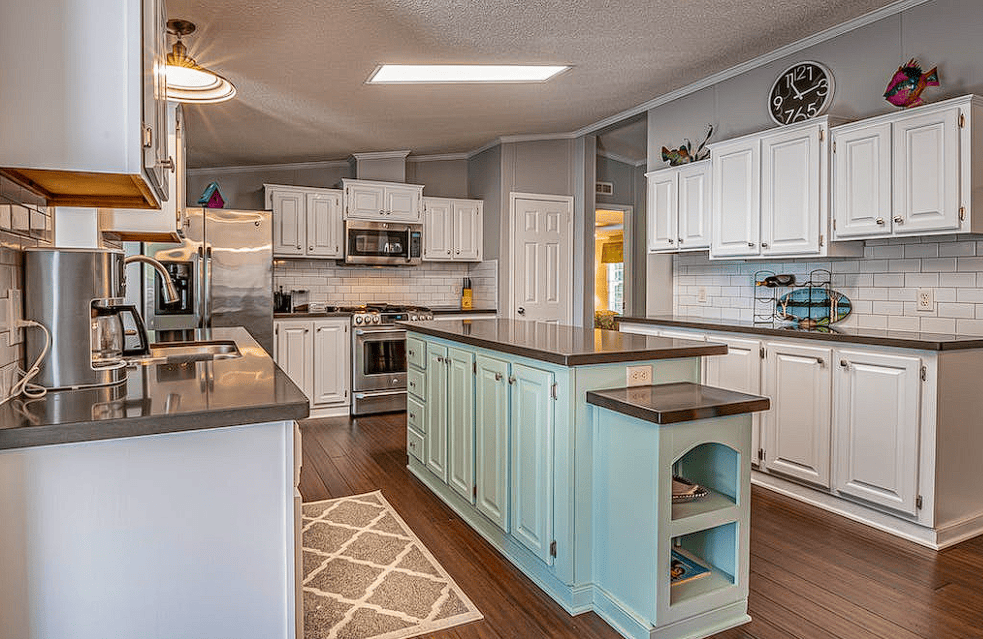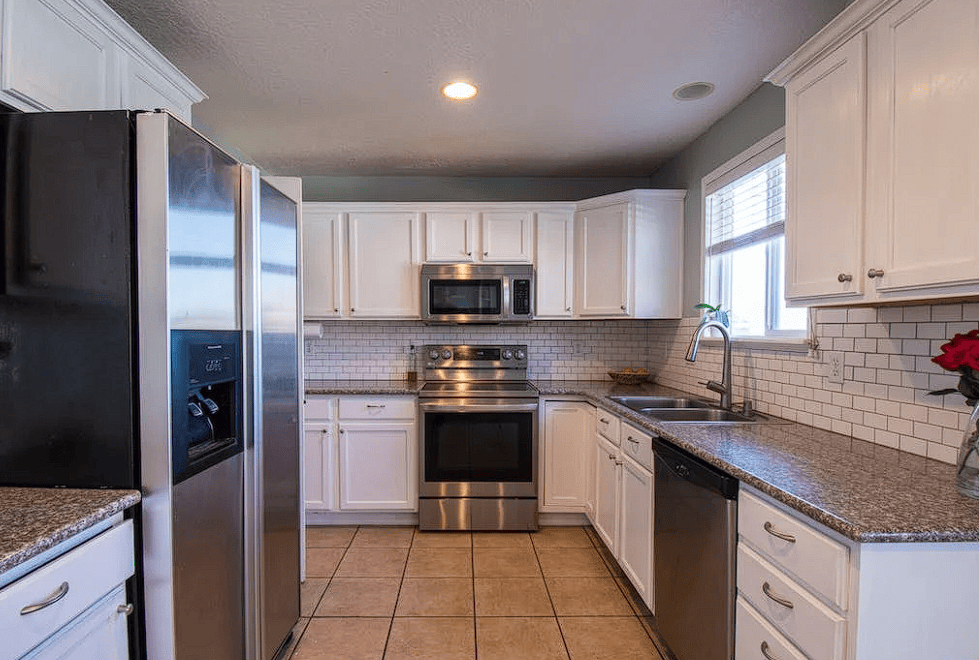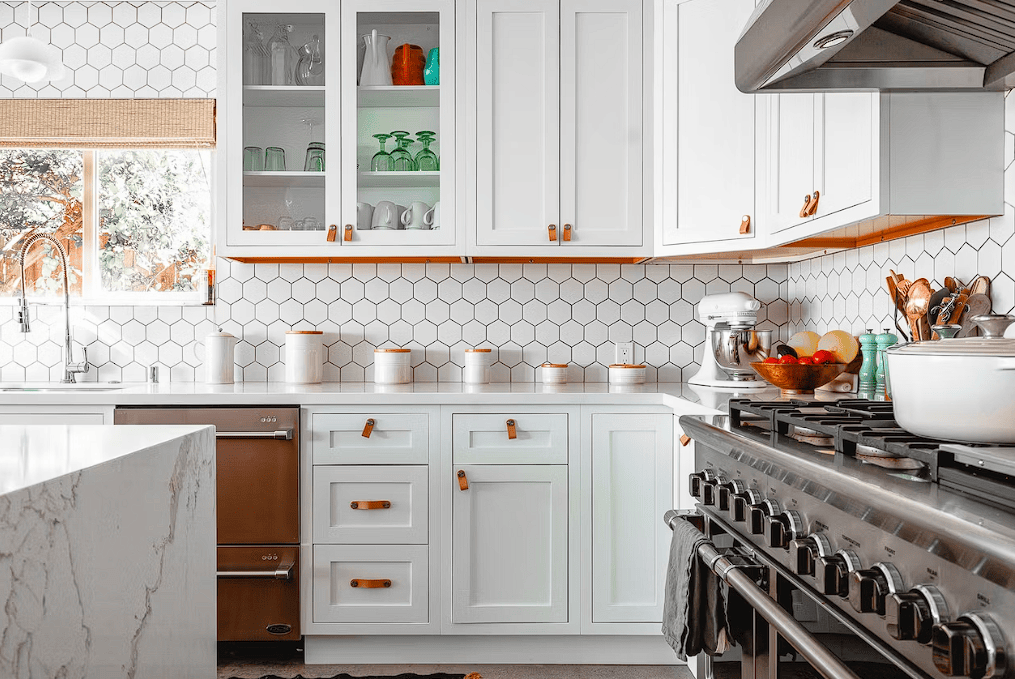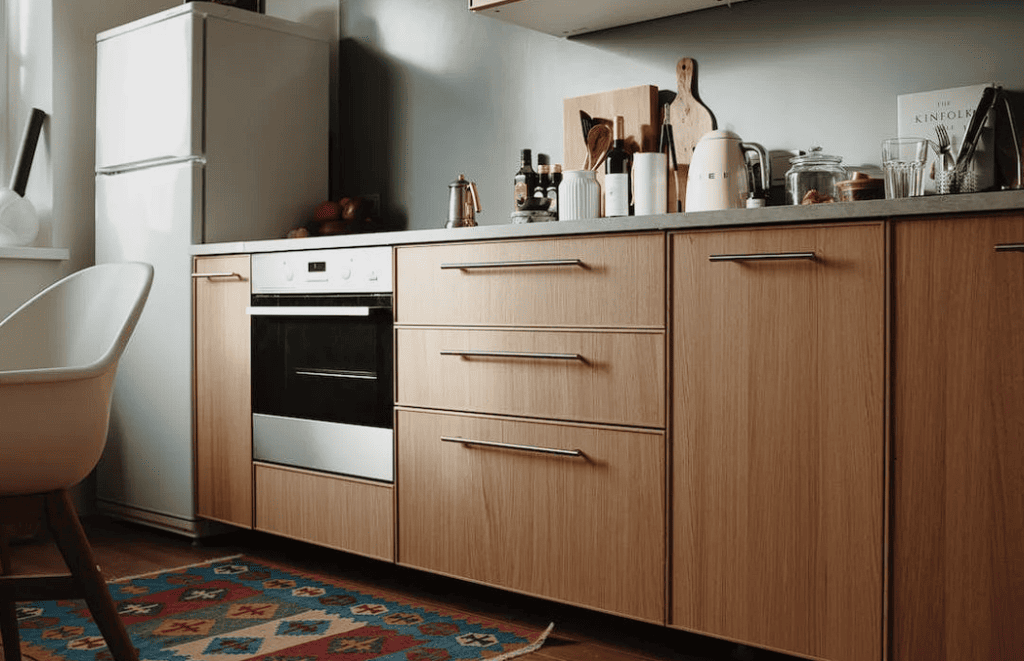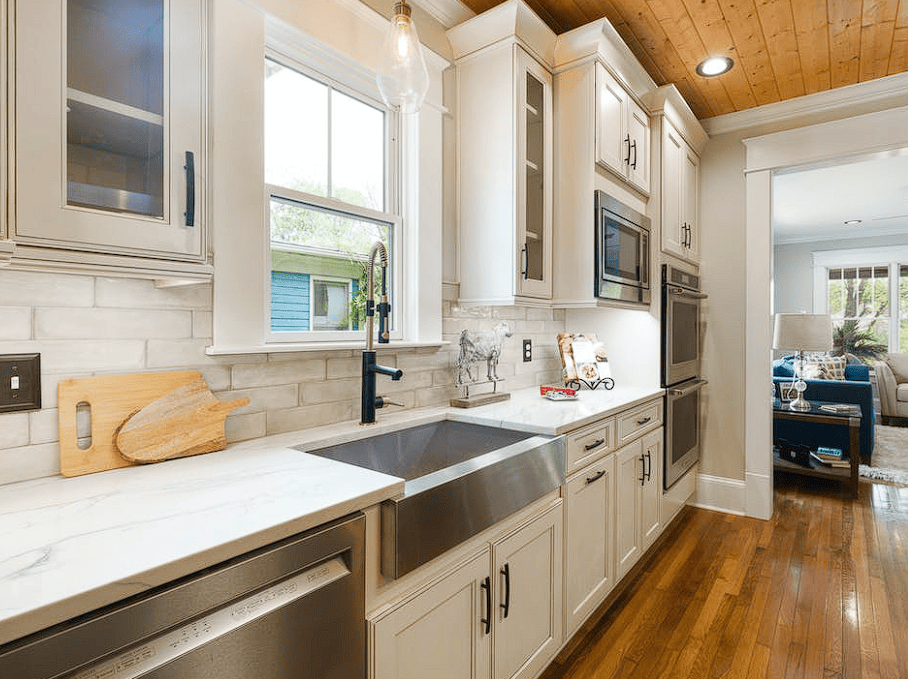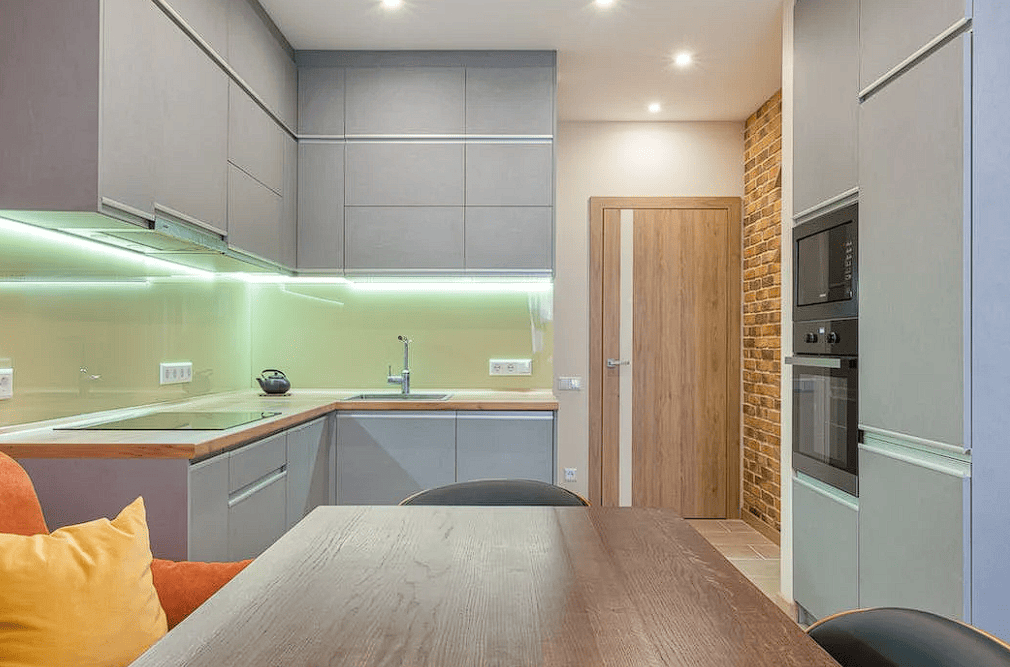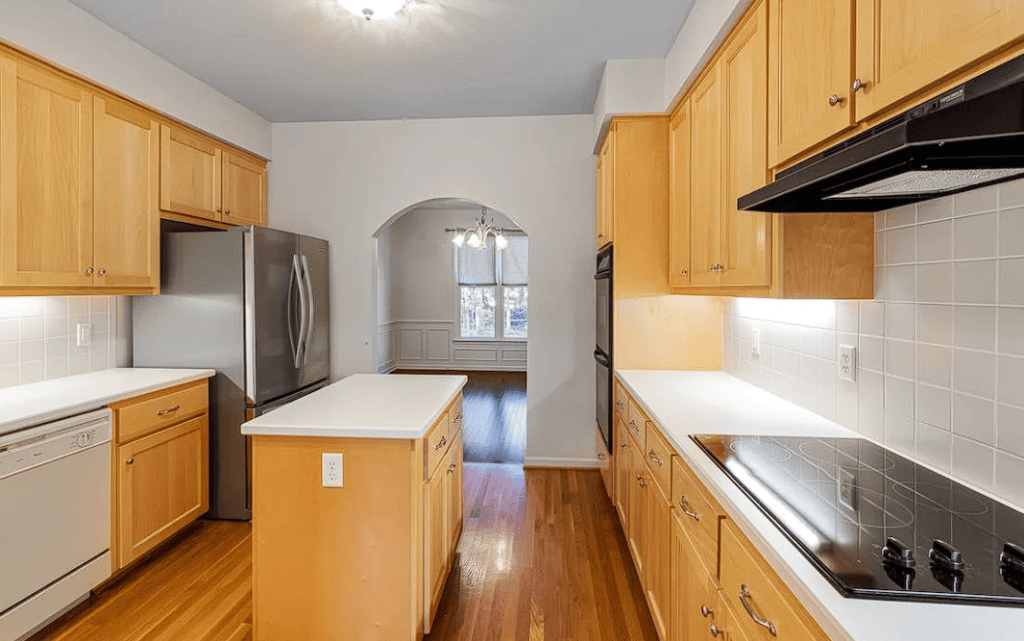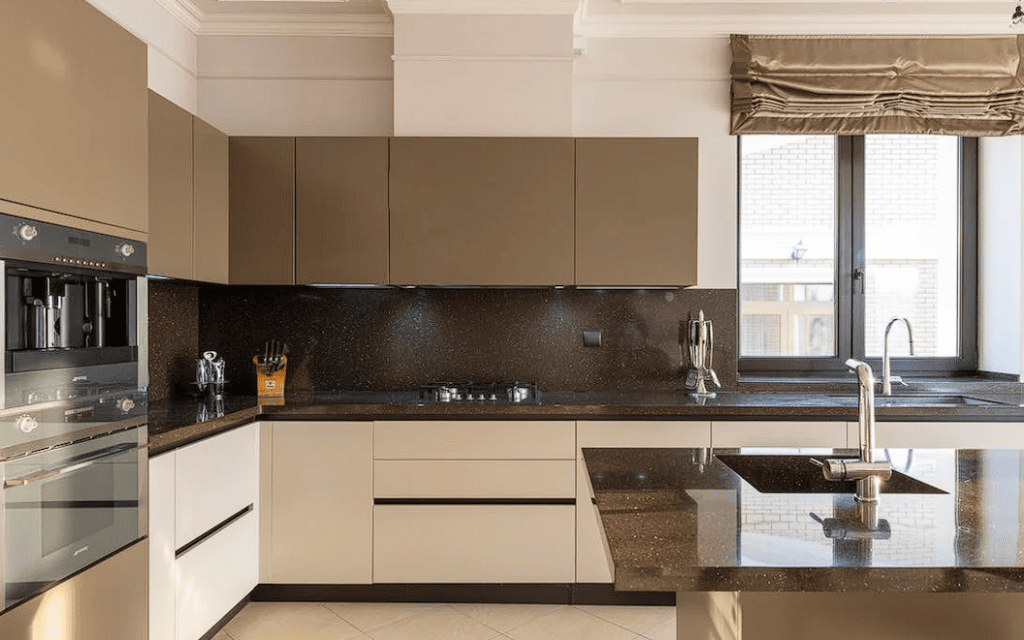When it comes to kitchen design, colour is a critical element that can greatly impact the overall look and feel of the space. Particularly, the colour of your kitchen cabinets can affect not only the overall atmosphere of the room, but also how large and functional it feels.
This article will discuss the significance of colour in kitchen cabinet design, including its impact on mood and ambience, how to select the best shade for your cabinets, the most recent colour trends in kitchens, and more. Whether you are a homeowner looking to update your kitchen or a designer seeking inspiration, understanding the importance of colour in kitchen cabinet design is essential for creating a beautiful and functional space.
Importance Of Colour In Kitchen Design
You've probably heard this before, but a new coat of paint can do wonders for a kitchen. Since the cabinets are so prominent, the hues you choose for them will set the tone for the entire kitchen.
Furthermore, it's about more than just looks. Everything from your disposition to your appetite to the perceived size of a space can be altered by its colour scheme. It can either increase or decrease your home's value. Though a lot rests on your choice of cabinet colours, making that choice is easier than you might think.
Setting The Mood Of A Kitchen
The kitchen's colour scheme is very important. Because of its impact on the viewer's emotional response, the colour scheme is a critical design element. It's important to choose colours that will create the mood you want for your kitchen because different colours evoke different emotions and feelings.
It's undeniable that the colour scheme of a room can affect our disposition and thoughts. Each colour has a profound impact on those who experience it, from our initial mood upon entering a kitchen to the level of mental stimulation we experience while performing kitchen tasks.
Which colours should we use, then? Establish your goals as a starting point. For instance, neutral colours like white and grey can help create an inviting atmosphere. To create a more contemporary and professional atmosphere, blue paint could be a perfect choice.
Both your mood and the way you feel about your surroundings are crucial when you're trying to unwind or calm down. One method for accomplishing this is the use of a "harmonious colour scheme," which involves the use of subdued colours to produce a soft effect without any bold variations or dramatic contrasts.
While darker shades can be ideal for larger kitchens in need of stress relief, lighter tones will make smaller ones feel more open and spacious. Colour schemes with movement are perfect for when you want to make a bold statement. Your kitchen may benefit from the use of bright and vivid tones in combinations of sharp contrast or impressive banks from bold hues.
Create Your Desired Sense Of Space With Kitchen Cabinet Colors
If you want your kitchen to feel more open and spacious, opt for lighter-coloured cabinets instead of darker ones.
We suggest using dark brown, black, or dark grey for your cabinetry if you have a large kitchen and want to make it feel cosier. When the contrast is high, the area seems smaller.
In contrast, a small kitchen benefits from brighter hues. If you want your kitchen to feel more open, go with white or beige cabinets. Paint the walls a neutral colour and use lighter colours for the backsplash and the floor to reinforce the effect.
The Top Kitchen Cabinet Colors Of All Time
Find out how various hues can alter the ambience of your kitchen before you start looking for cabinetry. Some cabinet colours are more eye-catching than others when it comes to the kitchen.
Kitchen Cabinets Models White
White cabinets, which are also part of Ikea's selection, are, arguably, adaptable to any kitchen design. In a small kitchen, white cabinets are a popular choice because of their ability to reflect light. Because of its connotations of cleanliness and openness, the colour white works well in cramped quarters.
White cabinets are versatile and can be used in any size kitchen. Since white is complementary to so many hues, you won't have to put much thought into creating a pleasing colour scheme. Today, white is one of the most popular colours for kitchen and living room cabinets.
A Red And Romantic Kitchen Design
We have not forgotten the adventurous cooks among us when selecting kitchen cabinets. It has been decided that red is an essential component of both the family room and kitchen design. You can bring some of that warm and fuzzy feeling you get from love into your kitchen by painting the walls a shade of this colour.
With the help of your loved ones, meal preparation can be a pleasant experience in a kitchen decorated in deep red tones.
By making sure the red cabinets go well with the rest of the kitchen, you can make a lovely design line.
Multicoloured Kitchen Cabinets
If you share our appreciation for wild patterns, we have some suggestions for a colourful wardrobe. Make a statement with complementary hues in your kitchen by combining different coloured appliances. It's acceptable to use more than one colour in a design, especially in the country or eclectic styles.
You can get along with the rest of the house thanks to the brightly coloured cabinets that are so popular in today's spacious kitchens. Colourful cabinetry models are a great way to bring cohesion to homes where the kitchen and living room are frequently used together.
Gray And Black Toned Cabinets
Black and grey are the colours to look for if you want modern kitchen cabinets. Cabinets for your kitchen in sombre shades of black and grey will help set the mood. In addition, by using these hues, you can finish off your home's sleek, contemporary look.
Kitchen Cabinets In Wood Colors
Whether you're going for a rustic, country, or eclectic look, the kitchen is the perfect place to start incorporating wood elements. Because of this, wooden cabinets are a good option for the kitchen. The cabinets you build, whether they're light or dark wood, will be the finishing touch to your home's interior design.
How to Choose the Best Kitchen Colour Scheme
Choose Your Cabinet Colours
When picking out a colour scheme for your kitchen, you should focus first on the cabinets. Kitchen cabinets can take up to 40 per cent of the visual space in your kitchen and cost anywhere from 50 to 80 per cent of your total budget, depending on the type of material and hardware you choose. Your kitchen cabinet selection should serve as a starting point for your colour scheme.
What to do: Go with a shade, pattern, and construction material that reflects your tastes and complements your home's existing decor. Do not worry too much just yet. After making your cabinet selections, move on to the next step.
Choose Your Appliance Colours
There's nothing stopping you from going the route of built-in appliances. After deciding which cabinets will best conceal your built-in appliances, you can move on to Step 3. If you prefer freestanding models, think about how the appliances' faces will look in relation to the rest of your cabinetry. You should not finish your cabinetry until you have decided on your appliances.
What to do: Your refrigerator, dishwasher, and sink will have the greatest influence on the overall aesthetic of your kitchen. Your home appliances should fit in with the overall design. Select home appliances whose finishes work well with the colour of your cabinetry to achieve this effect. Think about getting white or light grey cupboards to go with your white appliances. Browns, brights, and even some shades of grey all work well with stainless steel appliances. This may seem like common sense, but a lot of people get it wrong.
Select Your Countertops
The kitchen countertops you choose will set the tone for the entire room. Because of their proximity to eye level and their importance in terms of both function and cost, countertops tend to dominate the visual field. Your kitchen's aesthetic harmony will be disrupted if the countertops and cabinets don't go together.
What you should do is figure out what your budget is before you start looking at countertops. Then, think about the current kitchen floor's colour. Combining these two hues is a surefire method of achieving a harmonious colour scheme. Use a remnant of your existing cabinetry as a reference when shopping for new countertops to match any kitchen renovations.
Choose Flooring
The kitchen floor's colour usually depends on the decor of the rooms surrounding it. It can be tough to tell what will work and what won't if this isn't the case. The flooring in your kitchen should complement the other design choices you've made.
What to Do: Pick Your Materials First. Flooring options range from hardwood to tile to laminate. Pick another dominant colour (your cabinets being the other) to use as a guide. Your kitchen will take the form of a colour scheme that is complementary and contrasting. White cabinets, natural wood or laminate flooring, and a countertop that features gradations of light and dark colours are classic design choices.
Choose Your Wall Colour
Walls in the kitchen are often overlooked when it comes to choosing a colour palette. The walls of a room play a significant role in establishing the overall atmosphere. Even though cabinets, backsplashes, and shelves hide most of the wall space, it's still a sizable part of the room that stands out when it's poorly designed.
The solution is to choose a shade that harmonises nicely with the existing flooring, cabinetry, and backsplash. Walls painted in an off-white, cream, or dove grey will work well with a wide variety of kitchen design styles. You can use bright colours if you want, but make sure the floors and cabinets are more subdued.
Choose Hardware Colours
The devil is in the particulars. Installation of finishing touches such as faucets, cabinet pulls, and lighting comes at the very end of a renovation project but can make all the difference. No 'hard and fast' rules exist for choosing complementary hardware colours, but doing so does help to make the room appear more deliberate than average.
What to do: When choosing a colour scheme for your kitchen, stick to styles and finishes that go well together. Using only one type of metal throughout the hardware is one easy way to accomplish this. Examine your metal components; visualise how they'll look in your chosen storage units.
The thought of coming up with a cohesive colour scheme for your kitchen may be overwhelming. A beautiful, well-cohesive kitchen is the result of picking a starting point and working through each component one at a time. Kitchen flooring, cabinetry, and other design elements can all be found here, along with additional ideas and inspiration.
Conclusion
This article discusses the importance of colour in kitchen cabinet design, including its impact on mood and ambience, how to select the best shade for your cabinets, and the most recent colour trends in kitchens. It is important to choose colours that will create the mood you want for your kitchen, as different colours evoke different emotions and feelings. To create an inviting atmosphere, neutral colours like white and grey can help create an inviting atmosphere, while blue paint can create a more contemporary and professional atmosphere. The use of a "harmonious colour scheme" is an effective way to unwind or calm down. It involves the use of subdued colours to produce a soft effect without any bold variations or dramatic contrasts.
For larger kitchens, darker shades can be ideal, while lighter tones will make smaller ones feel more open and spacious. The Top Kitchen Cabinet Colors Of All Time include white cabinets, which are adaptable to any kitchen design and can be used in any size kitchen. White is also one of the most popular colours for kitchen and living room cabinets. The most important details in this text are that red is an essential component of both the family room and kitchen design and that multicoloured kitchen cabinets are a great way to bring cohesion to homes where the kitchen and living room are frequently used together. Black and grey are the colours to look for if you want modern kitchen cabinets, and wooden cabinets are a good option for a rustic, country, or eclectic look.
To choose the best kitchen colour scheme, it is important to focus first on the cabinets, which can take up to 40% of the visual space and cost anywhere from 50 to 80 per cent of the total budget. Choose a shade, pattern, and construction material that reflects your tastes and complements your home's existing decor. Choose your appliance colours to fit in with the overall design. Select your countertops to set the tone for the entire room. Choose to floor to complement the other design choices.
The most important details in choosing a colour scheme for a kitchen are to pick your materials first, choose your wall colour, choose your hardware colours, and work through each component one at a time. Flooring options range from hardwood to tile to laminate, while walls should be painted in a shade that harmonises with the existing flooring, cabinetry, and backsplash. Finishing touches such as faucets, cabinet pulls, and lighting should be installed at the end of the renovation project. A cohesive colour scheme is a result of picking a starting point and working through each component one at a time.
Content Summary
- Colour is a critical element that can greatly impact the overall look and feel of a kitchen.
- The colour of your kitchen cabinets can affect the overall atmosphere of the room and how large and functional it feels.
- The importance of colour in kitchen cabinet design is essential for creating a beautiful and functional space.
- Choosing the right cabinet colour can increase or decrease the value of your home.
- Different colours evoke different emotions and feelings.
- Neutral colours like white and grey can help create an inviting atmosphere.
- Blue paint could create a more contemporary and professional atmosphere.
- A "harmonious colour scheme" involves the use of subdued colours to produce a soft effect without any bold variations or dramatic contrasts.
- Darker shades can be ideal for larger kitchens in need of stress relief.
- Lighter tones will make smaller kitchens feel more open and spacious.
- White cabinets are versatile and can be used in any size kitchen.
- Red can create a romantic and warm feeling in a kitchen.
- Multicoloured cabinets can make a statement and create cohesion in homes where the kitchen and living room are frequently used together.
- Grey and black toned cabinets can create a sleek and contemporary look.
- Wooden cabinets are a good option for a rustic, country, or eclectic look.
- The colour scheme of a room can affect our disposition and thoughts.
- Each colour has a profound impact on those who experience it.
- Setting the mood of a kitchen is important.
- A small kitchen benefits from brighter hues.
- White cabinets are a popular choice in small kitchens because they reflect light and make the space feel open.
- Red cabinets can create a warm and fuzzy feeling in a kitchen.
- Multicoloured cabinetry models are popular in today's spacious kitchens.
- Black and grey cabinets can help set the mood for a modern kitchen.
- Wooden cabinets are perfect for incorporating wood elements into a kitchen.
- Choosing the right cabinet colour can affect your disposition and thoughts.
- Brighter hues can make a kitchen feel more open and spacious.
- Darker hues can make a kitchen feel cozier.
- Cabinet colour can impact the perceived size of a space.
- The kitchen's colour scheme is a critical design element.
- The right cabinet colour can create a beautiful and functional space.
Frequently Asked Questions
Color has a powerful impact on mood and atmosphere. Warm colors like red and orange can create a cozy and inviting atmosphere, while cool colors like blue and green can promote a calming and soothing environment. Bright colors like yellow and green can add energy and vibrancy to the space.
When choosing a color for your kitchen cabinets, consider the style and design of your kitchen, as well as your personal preferences. Neutral colors like white, gray, and beige are versatile and can work with many different design styles. Bold colors like navy blue or forest green can add drama and personality to the space. It's also important to consider how the cabinet color will coordinate with other elements in the kitchen, such as the countertop, backsplash, and flooring.
Currently, popular cabinet color trends include shades of blue, green, and gray, as well as bold hues like black or dark navy. Matte finishes are also popular, as they offer a sleek and modern look.
Lighter cabinet colors, such as white or cream, can help make a kitchen appear larger and more spacious. Pairing these cabinets with light-colored countertops and backsplashes can also create a sense of airiness and openness.
It's generally best to avoid overly trendy or bold colors that may become dated quickly. Additionally, colors that clash with other elements in the kitchen, such as the flooring or countertops, should be avoided.

